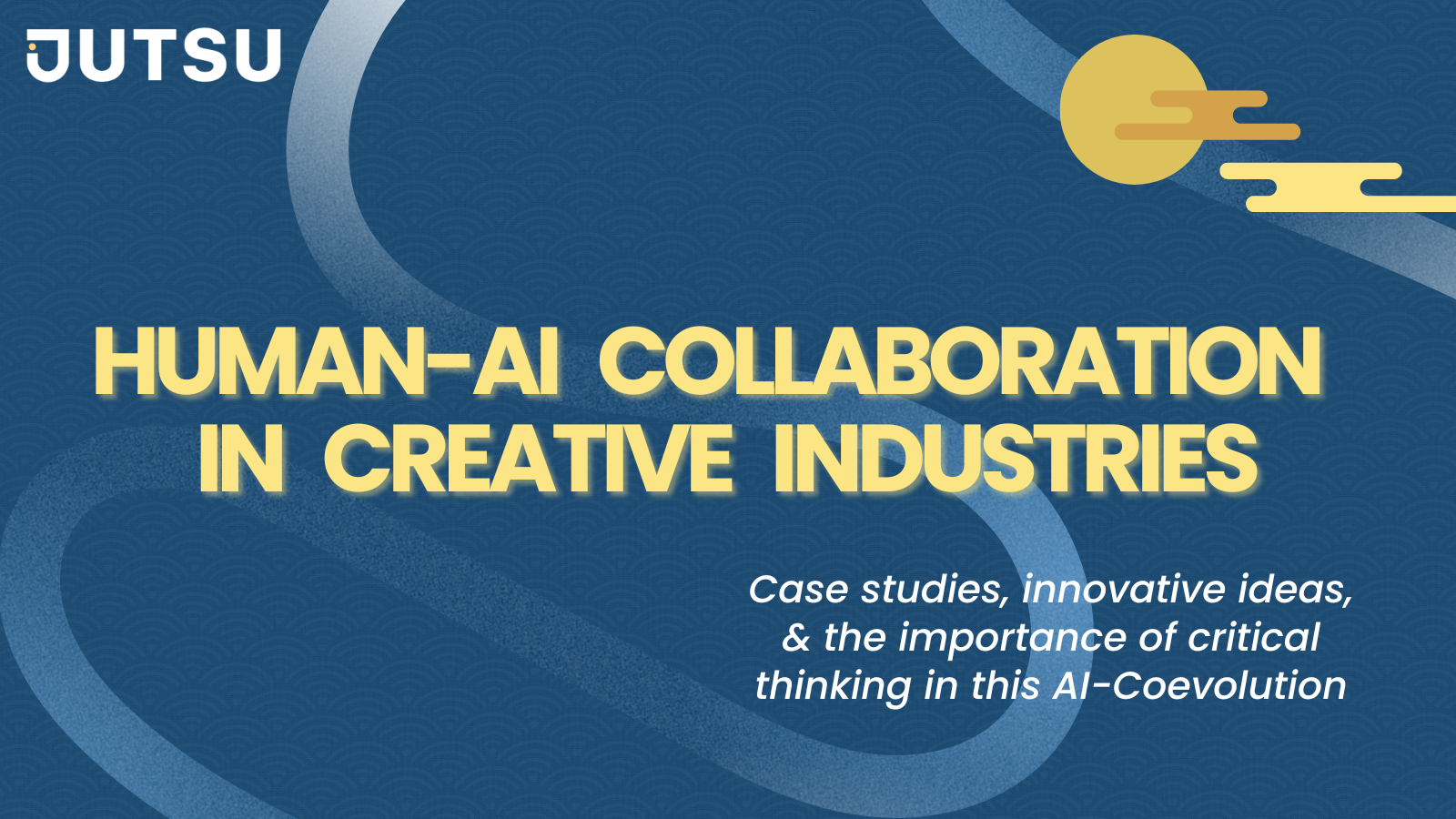The Future of Human-AI Collaboration in Creative Industries

The integration of Artificial Intelligence (AI) into creative fields is transforming how we create content, it's reshaping the very rules of creation. As technology zips ahead, our relationship with AI becomes increasingly intertwined. It's as if we aren't just using technology; we're evolving right alongside it.
This coevolution with AI opens up a wealth of new possibilities, introducing innovative ways to enhance creativity and efficiency across various domains. Yet, this progress doesn't come without its challenges. We're faced with ethical head-scratchers about our reliance on tech and the risk of becoming too cozy with our digital companions. In this piece, let’s dive into how AI is stirring up the creative pot, showcase some standout examples of AI-human teamwork, and consider the limitations that we should be mindful of as AI becomes more integrated into our lives.
Transforming Creative Processes with AI (And 5 Case Studies)
In fields like graphic design, literature, and music, AI tools are not just tools; they're becoming co-creators. These systems assist humans by suggesting improvements and introducing new ideas that might not be immediately obvious. For instance, in graphic design, AI can recommend adjustments to layouts and color schemes, potentially enhancing aesthetic appeal and user engagement.
A New York Times article from last year highlighted some of these creative applications of AI, painting a picture of a world where AI helps gardeners plan and data scientists optimize workouts. But AI has come a long way since then, evolving rapidly to offer even more sophisticated collaborations as noted in a recent ZDNet article, where AI's integration in business and creativity continues to deepen, impacting everything from customer engagement strategies to complex document processing.
Case Study 1: AI in Film Script Writing
Consider the evolution of platforms like ScriptBook, founded in 2015, which aids screenwriters by suggesting narrative elements such as story arcs and character development. This platform has undergone numerous updates to align better with the nuanced demands of storytelling, reflecting a deeper understanding of audience preferences and narrative satisfaction.
Case Study 2: Brain.fm – Tuning Into Productivity
Brain.fm uses AI to compose music that sharpens focus and enhances productivity, claiming noticeable effects within 15 minutes. Since its 2014 debut, it has evolved from a focus-enhancement tool into a multi-purpose platform exploring the possibilities of neurostimulation through sound, light, and touch, tailored to individual brain profiles.
Case Study 3: AI for Image Generation – DALL·E 3 and Beyond
DALL·E 3, a brainchild of OpenAI, simplifies creating art from text prompts within ChatGPT, making image generation accessible to everyone. For those seeking alternatives, Midjourney and Stability AI’s Stable Diffusion offer similar capabilities, enriching the creative toolkit available to today’s digital artists.
Case Study 4: AI in Everyday Tools
AI is weaving its way into tools we use daily, enhancing functionality and user experience. Canva and Notion have integrated AI, and allowing users to benefit from design and content organization enhancements, while Buffer and Grammarly use AI to optimize social media strategies and writing styles. Meanwhile, Instagram has begun to leverage AI for tailored content delivery and advanced search capabilities on the platform.
Case Study 5: AI for Programmers (and non-programmers alike!)
Jutsu: A New Wave in Web3 Development
Jutsu is redefining the landscape of Web3 development. Its robust, browser-based IDE is engineered for seamless integration of cutting-edge AI tools, enabling both seasoned developers and novices to swiftly build and deploy decentralized applications.
Bento: Your No-Code UI Companion
Bento, Jutsu’s prompt-based UI generator, transforms vague ideas into fully functional user interfaces with minimal effort. Designed for agility, Bento supports creators at all levels to bring their digital visions to life without delving into complex code.
AI Copilot: Your On-Demand Coding Partner
Jutsu’s AI Copilot is like having a senior developer by your side, offering real-time assistance—from code generation and bugfixes, to explaining code and writing documentation, and so much more. It helps streamline the development process, making coding more intuitive and less error-prone.
IntelliSense: Smart Coding Made Simpler
With IntelliSense, Jutsu enhances coding efficiency by providing automatic code completions and relevant documentation. This feature not only speeds up the development process but also helps in reducing errors, ensuring a smoother workflow.
New Ideas for AI Collaboration
Looking to the future, it’s likely that the role that AI plays in creative creations will morph into even more dynamic roles, such as:
- AI as a Project Manager: Picture this: AI not just chipping in for organization and structure, but actually steering the ship on creative projects, pulling user data and social media metrics across platforms, and tweaking strategies and advise on platform decisions based on true user interest.
- Virtual Co-Creation Spaces: Imagine a world where AI manages virtual reality platforms, offering real-time translations and creative nudges, helping researchers, artists, entreprenures, and everyone in between, collaborate without boundaries and bridge the gap between vision and reality.
- Interactive Films and TV: AI could soon tailor films or shows on-the-fly, shifting narratives based on viewer feedback to hook audiences like never before. Think Black Mirror's Bandersnatch, but with virtually infinite plotlines and options, allowing you to cater the experience to your viewing interests.
- Game Writing AI: Think of an AI that has been trained on the complex story lines, gameplay, beautiful visuals of games like Skyrim, Elden Ring, Ghost of Tsushima or God of War, and is able to work alongside game developers to craft new story lines and game mechanics that transcend the intricacies of present-day games.
Acknowledging the Growing Dependence on AI
A concern that's often overlooked is the potential for AI dependence, particularly for children, but among adults as well. The issue lies in developing a reliance on and preference for quick AI answers, bypassing the thorough exploration of a challenge. In this way, AI's ready-made might play a role in stifling creativity, rather than enhancing it, as we may use it to strive for correct answers, rather than enjoying the process of problem solving. Therefore, it’s important not to undermine the value of your own analytical reasoning and creative ideas, and to use AI as a tool to enhance your work, rather than as a replacement for critical thinking.
Embracing the AI Coevolution
The future of human-AI collaboration in creative fields holds immense promise, with AI positioned as an essential partner in the creative process. Leveraging AI's capabilities while acknowledging its limitations can elevate artistic endeavors to unprecedented levels. As technology advances, we stand on the brink of exploring new art forms and expressions that envision a world where technology enhances rather than overshadows human creativity. As we adopt these innovations, it’s important that we remain vigilant about AI's potential to influence our decisions and creativity. In essence, AI should be used as a tool to enhance rather than undermine our ability to think critically and create original work.

